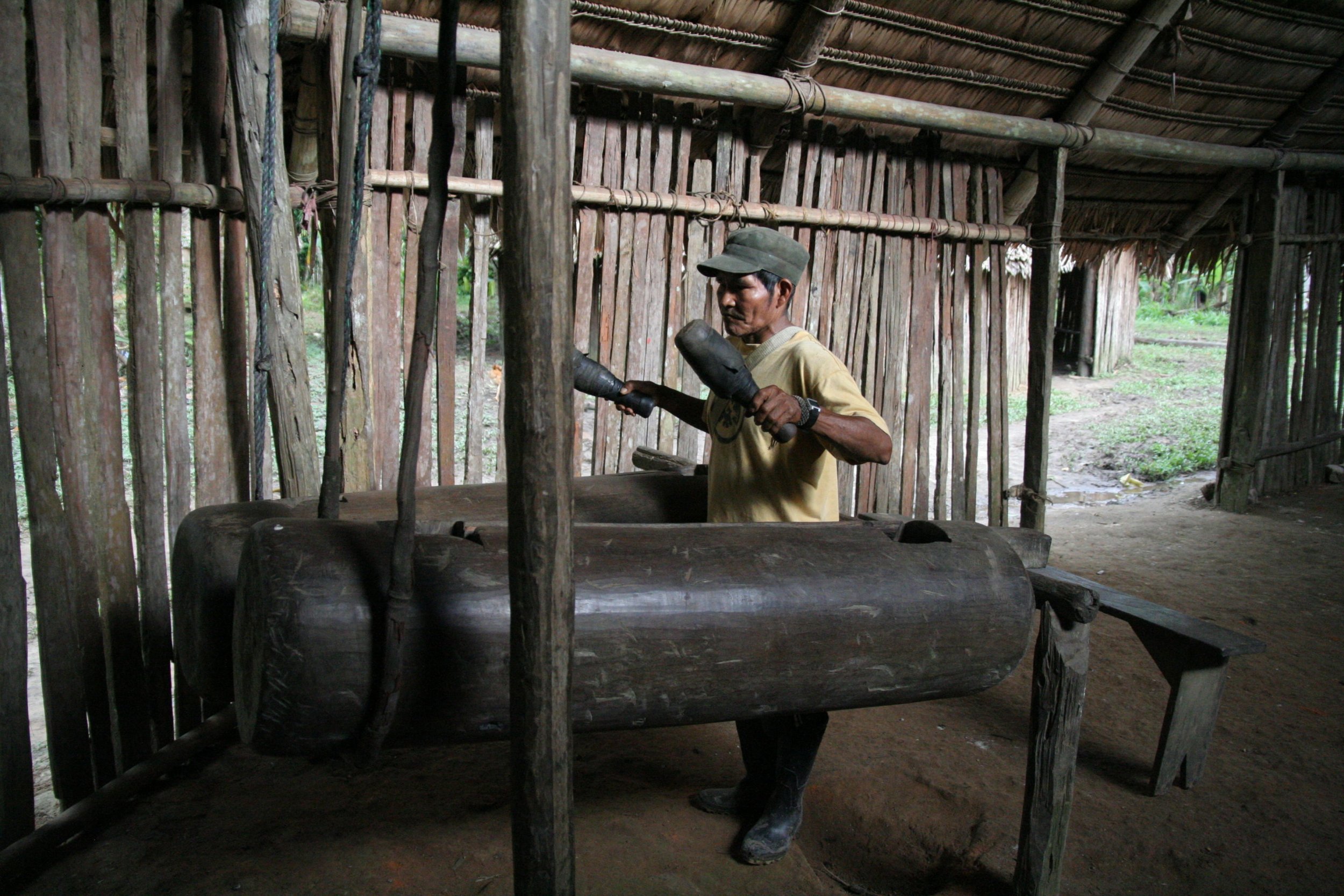
The Bora people of the northwestern Amazon have an unusual method of communicating over long distances.
Normally, human speech has a maximum range of about 200 meters, but the Boras—an indigenous group of about 1,500 members residing in small communities across the rainforests of Colombia and Peru—have developed a remarkable drummed communication system that allows them to "talk" over much greater distances.
Essentially, the Bora have translated their entire language into a series of drumming patterns. And, according to a new study conducted by an international team of researchers from the Max Planck Institute for Evolutionary Anthropology and the University of Grenoble, the Bora can reproduce the melody of words and sentences, as well as the rhythms of this language with drums.
To do this, they use traditional "manguaré drums"—pairs of carved hollow logs, one thicker and one thinner, which can produce four different pitches in total. These drums are used in festivals and rituals where memorized beat sequences are played with little or no variation. But they are also used to communicate public announcements and relatively informal messages, as they travel effectively through the dense rainforest.
"For example, the manguaré is used to ask someone to bring something, or to come do something, to announce the outcome of non-alcoholic drinking competitions, or the arrival of visitors," Frank Seifart, formerly of the linguistics department at the Max Planck Institute for Evolutionary Anthropology, said in a statement.
"In this model, only two pitches are used, and each beat corresponds to a syllable of a corresponding phrase of spoken Bora. The announcements contain on average 15 words and 60 drum beats."
These drumming patterns mimic the tone and rhythm of spoken Bora, which is a tonal language. In the study, published in the journal Royal Society Open Science, the researchers found that rhythm is especially important for distinguishing words in the drummed language. For example, within every pause between beats, there are small rhythmic units that correspond to how words in the spoken language are vocalized.
In times gone by, almost every Bora male would have been able to communicate with the drums. However nowadays, such skills are rare and there are only about 20 of the instruments left in active use in the region, according to Science. Spoken Bora is also gradually fading away and being replaced by Spanish.
The Bora are not the only people to have developed a communication system based on drumming. The practice has also emerged in numerous groups, across east and west Africa, Asia and the Amazon region.
Uncommon Knowledge
Newsweek is committed to challenging conventional wisdom and finding connections in the search for common ground.
Newsweek is committed to challenging conventional wisdom and finding connections in the search for common ground.
About the writer
Aristos is a Newsweek science reporter with the London, U.K., bureau. He reports on science and health topics, including; animal, ... Read more
To read how Newsweek uses AI as a newsroom tool, Click here.








